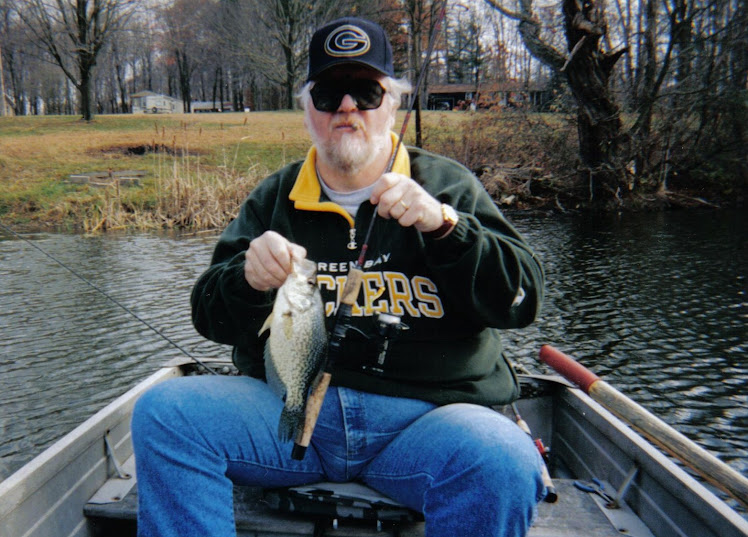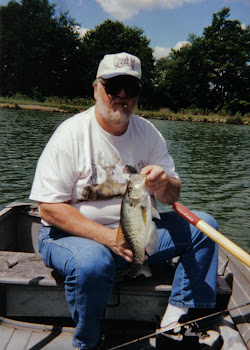The term "SOLUNAR" is the combination of the words "SOLAR" and "LUNAR" and the study of "SOLUNAR" deals with the effects on fish and wildlife that occur during different times of the day caused by the combined activities of the sun and the moon.
The study of the sun and moon and how their movements effect fish and wildlife has been on going for hundreds of years. The "NATIVE AMERICANS" depended on the harvest of fish and game for their survival and learned how important the solar and lunar influences were to the success of an adequate harvest of game.
It is a know fact that wildlife are more active during certain peaks of the solar and lunar movements and at different times of the day and night, most noticeably at dawn and dusk.
In 1926, John Alden Knight started research into the solunar activities and their effect on wildlife. His research resulted in a publication of tables which showed periods of "Major" and "Minor" activities. During Knight's study, data was analyzed pertaining to over 200 record catches of fish. The analysis showed that 90% of the catches were made under the effect of the "NEW MOON" and while in a solunar period.
More studies were done at Northwestern University, by Dr. Frank A Brown, using live oysters that he had brought to his lab in Chicago, Illinois. Oysters open their shells at each "High Tide" and tides are controled by lunar influence. Dr. Brown discovered that the oysters opened their shells corresponding to the times that the moon was directly "overhead" and "underfoot" for Chicago.
Solunar tables have been in use since 1936. These tables show the time frame when "Major" and "Minor" periods of solar and lunar activities occur and gives windows into periods of significant increase in wildlife activities.
The terms "MAJOR" and "MINOR" are related to the position of the moon. The Majors occur when the moon is directly overhead and directly underfoot (on the opposite side of the earth). The Minors are when the moon is half way between the overhead and underfoot positions. There are two Majors and two Minors in every 24 hour period. These periods are predicted to be when fish and wildlife are most active.
If possible, try to schedule your fishing and hunting periods within the major and minor periods of the day or night for a greater success of your outting.
The facts and figures of this article were published through the Weather Channel.
This blog will be about some of my fishing adventures while growing up in Ohio. Included will be fishing tips,how to advise,things not to do and in general, just having fun while fishing!
Fall Crappie

Me with a nice Black Crappie and Cigar
Late Summer Crappie

Me with a nice White crappie and Cigar
Friday, October 15, 2010
Monday, October 11, 2010
PASSED RESOLUTION ON LEAD AMMUNITION AND FISHING TACKLE
Back in September, I posted an article on the proposed ban of lead in fishing tackle and ammunition. Here is the lastest adopted resolution from the Association of Fish and Wildlife Agency:
RESOLUTION #1-2010
LEAD AMMUNITION AND FISHING TACKLE
WHEREAS, lead is used for ammunition and fishing tackle due to its unique properties
and ease and cost of manufacture; and
WHEREAS, lead from ammunition and fishing tackle under certain circumstances of
exposure may pose health risks to wildlife; and
WHEREAS, state fish and wildlife agencies have primary trust responsibilities for most
fish and wildlife resources in this country; and
WHEREAS, the Association of Fish and Wildlife Agencies, which represents the collective
perspectives of the state fish and wildlife agencies, played a key leadership role in
resolution of the debate over regulation of lead shot for waterfowl hunting in the 1970s
and ‘80s; and
WHEREAS, state fish and wildlife agencies have been proactive in implementing
regulations, educational initiatives, and other efforts to reduce lead exposure to fish and
wildlife in cases where population‐level impacts have been documented;
NOW, THEREFORE, BE IT RESOLVED that the Association of Fish and Wildlife Agencies
adopt the following principles regarding future regulation of lead ammunition and lead
fishing tackle:
1. Future regulation of lead ammunition and lead fishing tackle is best addressed by the
individual states, rather than federal agencies.
2. State fish and wildlife agencies should proactively address issues associated with
wildlife population health, and cooperate with the respective state health agencies
where human health issues have been substantiated, related to lead ammunition and
lead fishing tackle.
3. Decisions related to future regulation of lead ammunition and lead fishing tackle
should be based on the best available science related to wildlife population health.
4. Effective human dimensions strategies should be developed to ensure good
communication and understanding by hunters, anglers, and shooting sports interests.
5. Collaboration with industry, conservation organizations, hunting, angling, and
shooting sports interests is essential, and AFWA and the states should continue to lead
efforts to bring this about.
6. State agencies should focus regulation efforts where population‐level impacts to
wildlife are substantiated.
7. Public education and voluntary programs may be used where appropriate in lieu of
regulation.
8. Any new regulations that restrict use of lead ammunition or lead fishing tackle should
include multi‐year phase‐in periods to allow industry, retailers, and hunters and anglers
necessary time to transition and phase‐in non‐lead substitutes.
9. State fish and wildlife agencies should lead efforts to develop the best science, and
AFWA should provide this information to members for their use in bringing hunters,
anglers and various interests together to determine the need for and nature of any
needed management approaches to use of lead ammunition and lead fishing tackle.
Resolution passed September 29, 2010.
RESOLUTION #1-2010
LEAD AMMUNITION AND FISHING TACKLE
WHEREAS, lead is used for ammunition and fishing tackle due to its unique properties
and ease and cost of manufacture; and
WHEREAS, lead from ammunition and fishing tackle under certain circumstances of
exposure may pose health risks to wildlife; and
WHEREAS, state fish and wildlife agencies have primary trust responsibilities for most
fish and wildlife resources in this country; and
WHEREAS, the Association of Fish and Wildlife Agencies, which represents the collective
perspectives of the state fish and wildlife agencies, played a key leadership role in
resolution of the debate over regulation of lead shot for waterfowl hunting in the 1970s
and ‘80s; and
WHEREAS, state fish and wildlife agencies have been proactive in implementing
regulations, educational initiatives, and other efforts to reduce lead exposure to fish and
wildlife in cases where population‐level impacts have been documented;
NOW, THEREFORE, BE IT RESOLVED that the Association of Fish and Wildlife Agencies
adopt the following principles regarding future regulation of lead ammunition and lead
fishing tackle:
1. Future regulation of lead ammunition and lead fishing tackle is best addressed by the
individual states, rather than federal agencies.
2. State fish and wildlife agencies should proactively address issues associated with
wildlife population health, and cooperate with the respective state health agencies
where human health issues have been substantiated, related to lead ammunition and
lead fishing tackle.
3. Decisions related to future regulation of lead ammunition and lead fishing tackle
should be based on the best available science related to wildlife population health.
4. Effective human dimensions strategies should be developed to ensure good
communication and understanding by hunters, anglers, and shooting sports interests.
5. Collaboration with industry, conservation organizations, hunting, angling, and
shooting sports interests is essential, and AFWA and the states should continue to lead
efforts to bring this about.
6. State agencies should focus regulation efforts where population‐level impacts to
wildlife are substantiated.
7. Public education and voluntary programs may be used where appropriate in lieu of
regulation.
8. Any new regulations that restrict use of lead ammunition or lead fishing tackle should
include multi‐year phase‐in periods to allow industry, retailers, and hunters and anglers
necessary time to transition and phase‐in non‐lead substitutes.
9. State fish and wildlife agencies should lead efforts to develop the best science, and
AFWA should provide this information to members for their use in bringing hunters,
anglers and various interests together to determine the need for and nature of any
needed management approaches to use of lead ammunition and lead fishing tackle.
Resolution passed September 29, 2010.
Subscribe to:
Comments (Atom)